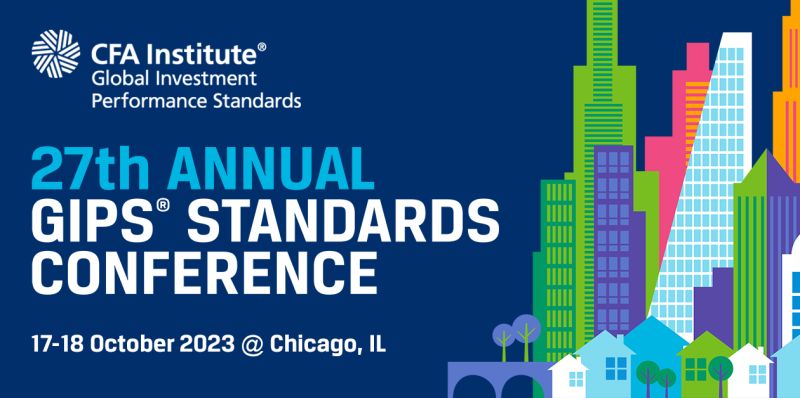For Public Comment: Exposure Draft of the Guidance Statement for OCIO Strategies
The Exposure Draft of the Guidance Statement for OCIO Strategies can be read in full on the Global Investment Performance Standards (GIPS®) website.
An Outsourced Chief Investment Officer (OCIO) provides investment advice and investment management services on an outsourced basis to institutional investors. In the Exposure Draft of the Guidance Statement for OCIO Strategies, CFA Institute examines some of the performance-related issues that OCIO managers have faced and offers proposed guidance on how to address them. Here, I discuss the key elements of the draft and the circumstances that led to its creation.
Growth in the OCIO Industry
The assets managed by OCIOs have seen tremendous growth over the last several years. According to Pensions & Investments, global OCIO assets managed for institutional investors totaled about $2.7 trillion as of 31 March 2022, up 86.1% from 2017. As reported on the website for Chief Investment Officer (CIO), a Cerulli Associates report indicates that approximately 25% of asset owners believe they will use an OCIO to some degree during the next two years.
An OCIO can provide many potential benefits to an organization, including:
- the ability to adjust asset allocations more quickly when market conditions change,
- access to private markets and expertise that may not be available in-house, and
- back office resources and support.

Performance Comparability Challenges
The rapid growth in OCIO managed assets has come with growing pains. Search consultants have found a lack of consistency in investment performance, particularly in how portfolios are grouped together, how fees are disclosed, and how legacy assets are treated.
To address these challenges, North Pier Fiduciary Management launched a working group of OCIO industry participants in December 2018; CFA Institute staff joined these meetings soon after.
Existing GIPS Standards Guidance for OCIOs
Shortly after North Pier Fiduciary Management launched the working group, CFA Institute created the GIPS Standards for Fiduciary Management Providers (FMPs) to UK Pension Schemes (GIPS Standards for FMPs) in 2019 to address Part 6 of the United Kingdom’s Competition and Markets Authority (CMA) order. Part 6 requires fiduciary managers to use a standardized methodology and template when providing information on past performance to potential Pension Scheme Trustee clients.
Many OCIO managers outside the UK inquired about complying with the GIPS Standards for FMPs. Since the GIPS Standards for FMPs were designed specifically for the UK regulatory regime, CFA Institute determined that they would not be appropriate for OCIO strategies beyond those provided for UK pension schemes.
Formation of OCIO Working Group
After participating in the North Pier working group and receiving feedback about the GIPS Standards for FMPs from OCIO managers outside of the UK, CFA Institute organized an OCIO Working Group in 2022. Composed of many industry experts, including several who served on the North Pier working group, the OCIO Working Group sought to determine what guidance was needed by firms that offered OCIO strategies and claim compliance with the GIPS Standards for Firms.
After over a year of consultation, the OCIO Working Group has issued the Exposure Draft of the Guidance Statement for OCIO Strategies. The key components of the proposed Guidance Statement include:
1. Required Composite Structure
The proposed guidance would require firms with portfolios managed to an OCIO strategy to include those portfolios in Required OCIO Composites and provide information for the appropriate Required OCIO Composite to all prospects. It categorizes Required OCIO Composites by Liability-Focused and Total Return strategies and breaks these down further by allocation to liability-hedging and risk-mitigating assets, respectively.
Use of a Required OCIO Composite structure, and whether the Required OCIO Composite structure should be defined according to client type (e.g., endowments, foundations, pension, etc.), were central topics in OCIO Working Group discussions. However, to achieve the greatest comparability among firms, the Working Group decided that all types of portfolios that meet the composite definition should be included in Required OCIO Composites. If a firm wishes to provide more granular information, it may create additional composites, such as the Total Return Objective Moderate – Endowment Only Composite.
The proposed Required OCIO Composite structure is as follows:
Required OCIO Composites for Total OCIO Portfolios
| Required OCIO Composites | Allocation to Liability-Hedging Assets | Allocation to Growth Assets |
| Liability-Focused Aggressive Liability-Focused Moderately Aggressive Liability-Focused Moderate Liability-Focused Moderately Conservative Liability-Focused Conservative | 0–20% 21–30% 31–50% 51–75% 76–100% | 80–100% 70–79% 50–69% 25–49% 0–24% |
| Required OCIO Composites | Allocation to Risk-Mitigating Assets | Allocation to Growth Assets |
| Total Return Objective Aggressive Total Return Objective Moderately Aggressive Total Return Objective Moderate Total Return Objective Moderately Conservative Total Return Objective Conservative | 0–20% 21–30% 31–50% 51–75% 76–100% | 80–100% 70–79% 50–69% 25–49% 0–24% |
2. Legacy Assets
One of the most challenging issues for firms that manage OCIO assets is how to treat the legacy assets they inherit. Legacy assets a firm wishes to sell may be difficult to sell on a timely or even longer-term basis. The Guidance Statement proposes three options. The firm may:
- Exclude from composites portfolios with legacy assets when the legacy assets materially affect the ability of the firm to implement its intended OCIO strategy. The firm may consider the amount and type of legacy assets when making this determination.
- Include in composites portfolios with legacy assets, regardless of the amount or type of legacy assets, because the firm determines that it can still manage these portfolios to its intended OCIO strategy.
- Include in composites the portion of the portfolio that excludes legacy assets when this portion of the portfolio is consistent with a Total OCIO Portfolio.
Rather than define a level of materiality to apply to all situations, the OCIO Working Group concluded that firms should establish their own materiality thresholds for when to exclude legacy assets and disclose in the GIPS Report information about the portfolios or assets it excludes from the composite due to legacy positions.
3. Fee Transparency
OCIO portfolios incur investment management fees in many different ways. For example, a portfolio may pay investment management fees to the firm managing the portfolio, to external managers, as well as through proprietary or external pooled fund holdings. Also, the investment management fees paid to the firm may be offset by those paid to proprietary funds.
Because of the complexity of the different investment management fees that may be charged for an OCIO strategy, the proposed guidance would require firms to present both gross-of-fees and net-of-fees returns for Required OCIO Composites. With this data, along with the fee schedule, prospective clients will better understand the OCIO strategy’s full costs and be able to compare returns from different firms.
How to Learn More and Give Your Feedback
We hope this Guidance Statement provides clarity both for firms that manage OCIO assets and claim compliance with the GIPS standards as well as those that manage OCIO assets and are considering compliance with the GIPS standards. But we also want to hear from you. What do you think? Did we get this guidance right?
Submit your comments by email to [email protected] by 20 November 2023.
The full text of the Exposure Draft of Guidance Statement for OCIO Strategies is available on the GIPS standards website.
If you liked this post, don’t forget to subscribe to Market Integrity Insights.
All posts are the opinion of the author. As such, they should not be construed as investment advice, nor do the opinions expressed necessarily reflect the views of CFA Institute.
Image credit: ©Getty Images/ Orbon Alija
Professional Learning for CFA Institute Members
CFA Institute members are empowered to self-determine and self-report professional learning (PL) credits earned, including content on Market Integrity Insights. Members can record credits easily using their online PL tracker.



